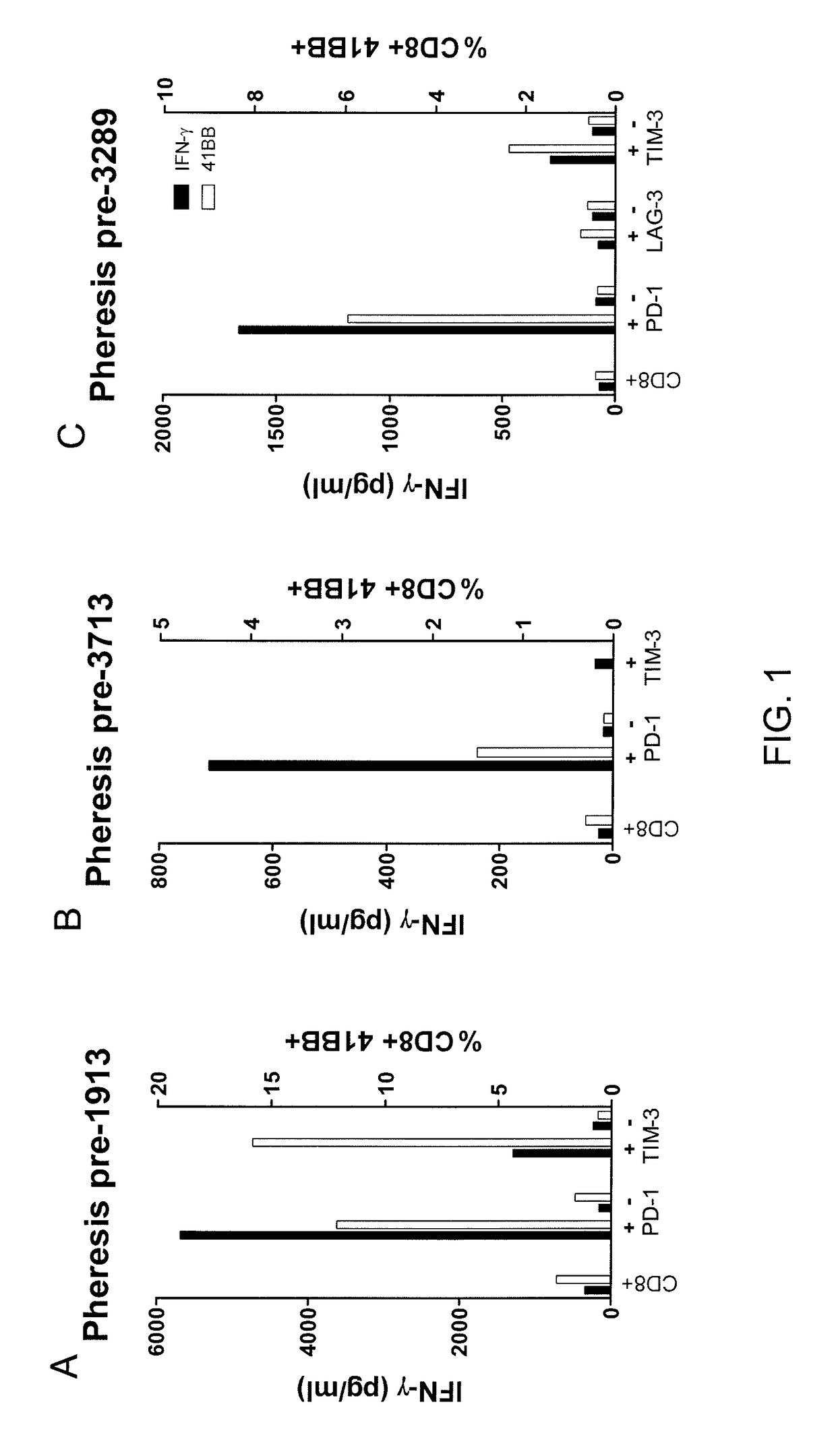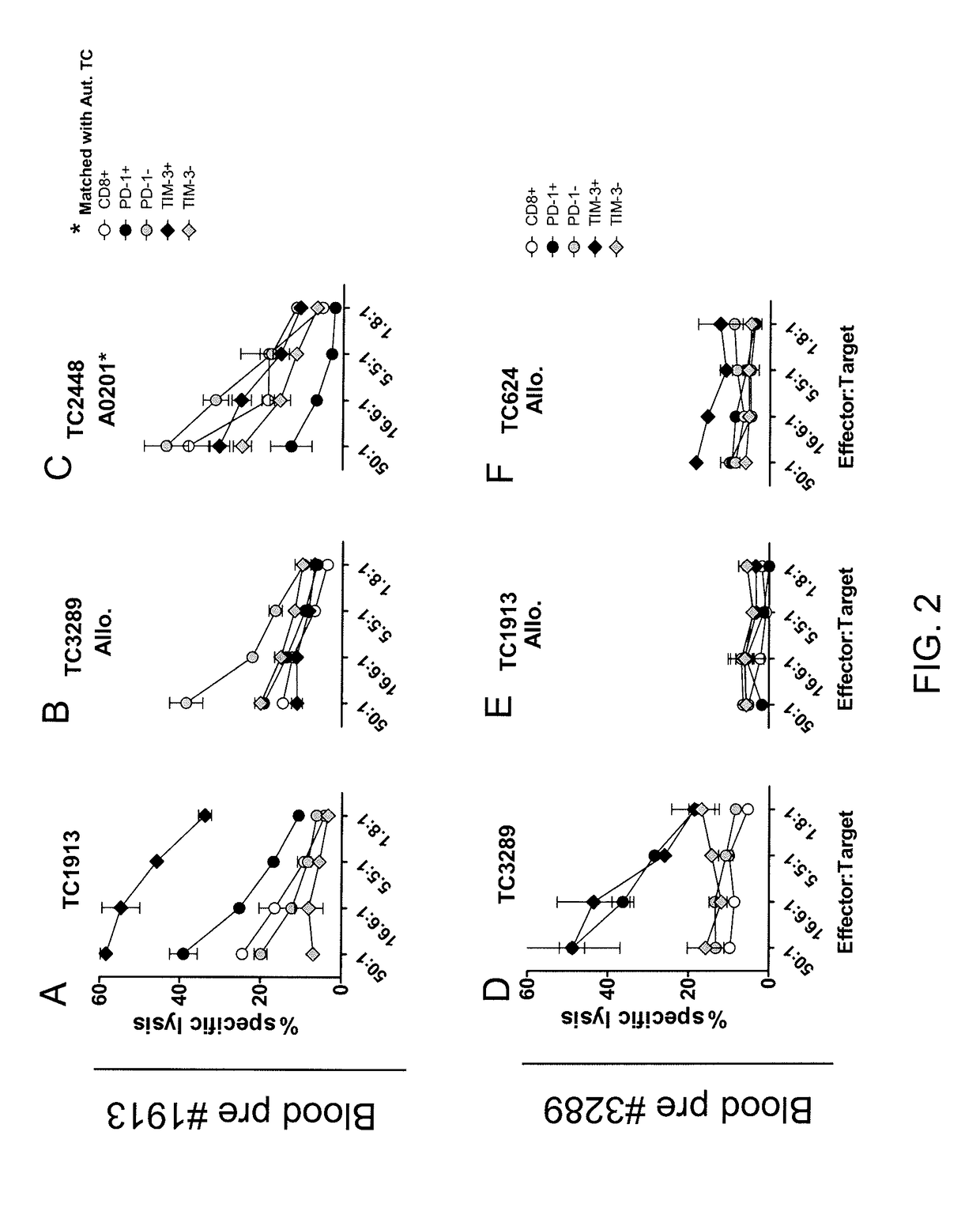Methods of producing enriched populations of tumor reactive T cells from peripheral blood
a technology of peripheral blood and t cells, which is applied in the direction of blood/immune system cells, instruments, drug compositions, etc., can solve the problems of insufficient tumor-specific reactivity of t cells isolated from peripheral blood, and many obstacles to the successful use of act for cancer and other diseases
- Summary
- Abstract
- Description
- Claims
- Application Information
AI Technical Summary
Benefits of technology
Problems solved by technology
Method used
Image
Examples
example 1
[0045]This example demonstrates the in vitro autologous tumor recognition of T cells isolated from the peripheral blood of melanoma patients according to expression of PD-1, TIM-3, or LAG-3 after expanding the numbers of cells in vitro.
[0046]4-1BB up-regulation is an indicator of TCR stimulation. It has been observed that after the numbers of cells are expanded and in the absence of TCR stimulation, 4-1BB expression is lost. It has also been observed that after the numbers of cells are expanded and the cells are co-cultured with the autologous tumor cell line, T cells that had previously lost 4-1BB expression and which are stimulated by the cell line will re-express 4-1BB. Accordingly, 4-1BB expression is measured 24 hours after co-culture with autologous tumor as a marker of TCR stimulation against the autologous tumor cell line.
[0047]Cells obtained from the peripheral blood of each of three melanoma patients (1913, 3713, and 3289) by apheresis were rested over night without cytoki...
example 2
[0051]This example demonstrates the in vitro autologous tumor recognition of T cells isolated from the peripheral blood of melanoma patients and sorted according to expression of PD-1 or TIM-3 after expanding the numbers of cells in vitro.
[0052]Cells were obtained from the peripheral blood of patient 1913 or patient 3289 and were sorted according to expression of PD-1 or TIM-3 by FACS as described in Example 1. The numbers of sorted cells were expanded for 14 days in vitro. On day 15, target tumor cell lines (autologous and allogeneic) were labeled with 51Cr and co-cultured for 4 hours with the sorted populations of cells (effector cells) at the ratios shown in FIGS. 2A-2F. 51Cr release was determined in triplicate by γ-counting and the percentage of specific lysis was calculated using the following formula: [(experimental counts per minute (cpm) spontaneous cpm) / (maximal cpm spontaneous cpm)]×100. The results are shown in FIGS. 2A-2F.
[0053]As shown in FIGS. 2A-2F, cells obtained fr...
PUM
| Property | Measurement | Unit |
|---|---|---|
| tumor-specific reactivity | aaaaa | aaaaa |
| pharmaceutical composition | aaaaa | aaaaa |
| fluorescence- | aaaaa | aaaaa |
Abstract
Description
Claims
Application Information
 Login to View More
Login to View More - R&D
- Intellectual Property
- Life Sciences
- Materials
- Tech Scout
- Unparalleled Data Quality
- Higher Quality Content
- 60% Fewer Hallucinations
Browse by: Latest US Patents, China's latest patents, Technical Efficacy Thesaurus, Application Domain, Technology Topic, Popular Technical Reports.
© 2025 PatSnap. All rights reserved.Legal|Privacy policy|Modern Slavery Act Transparency Statement|Sitemap|About US| Contact US: help@patsnap.com


